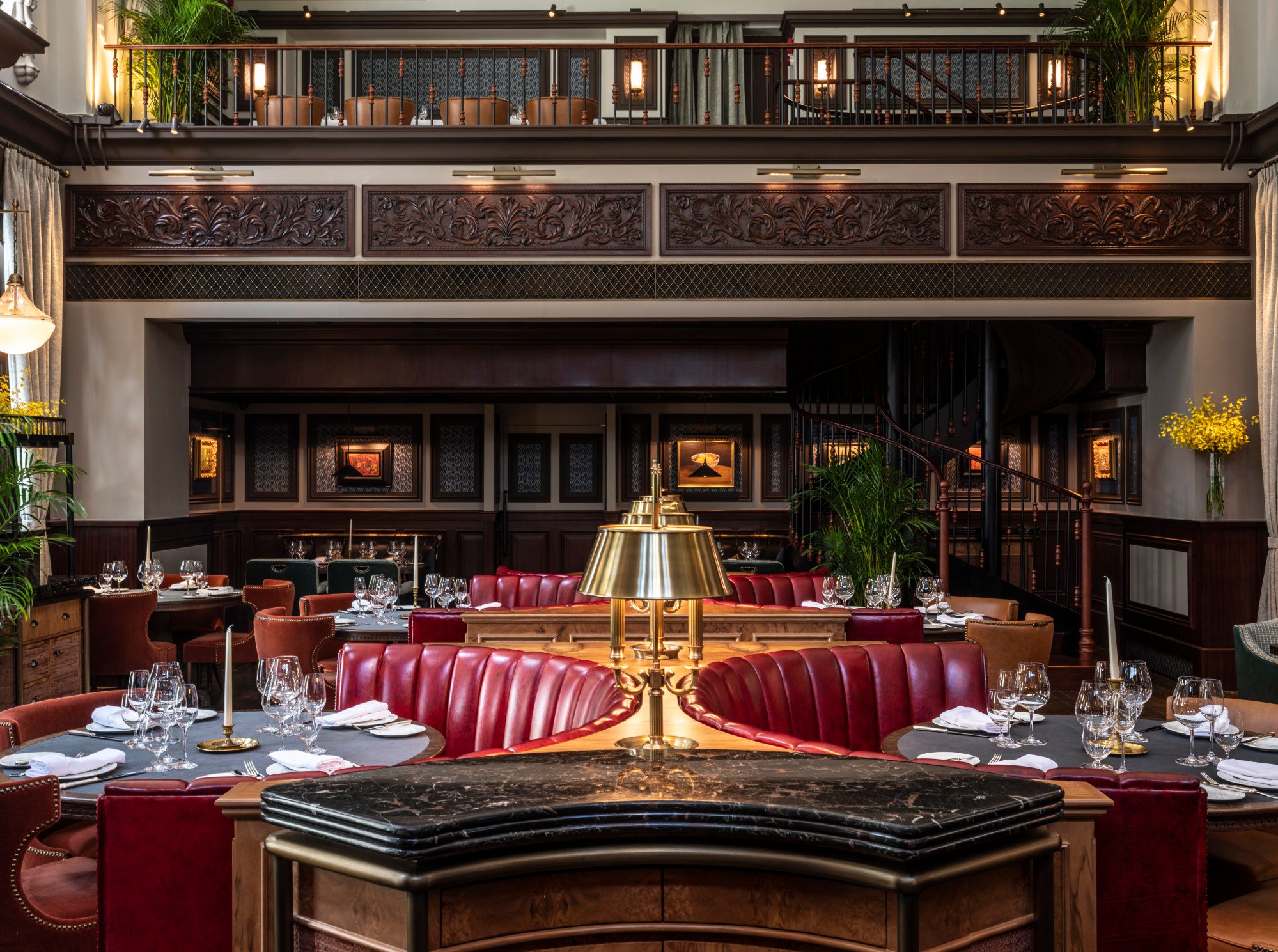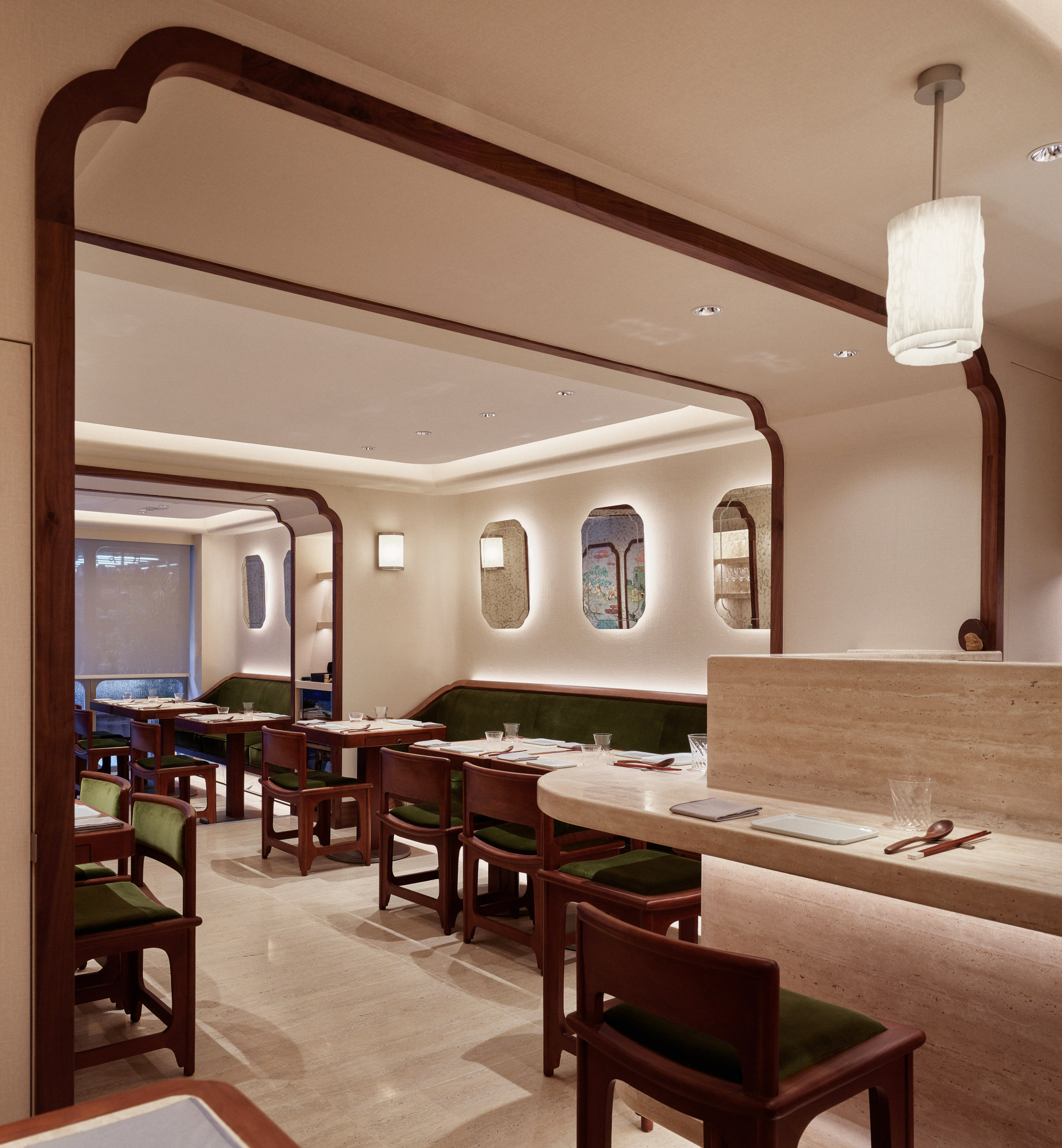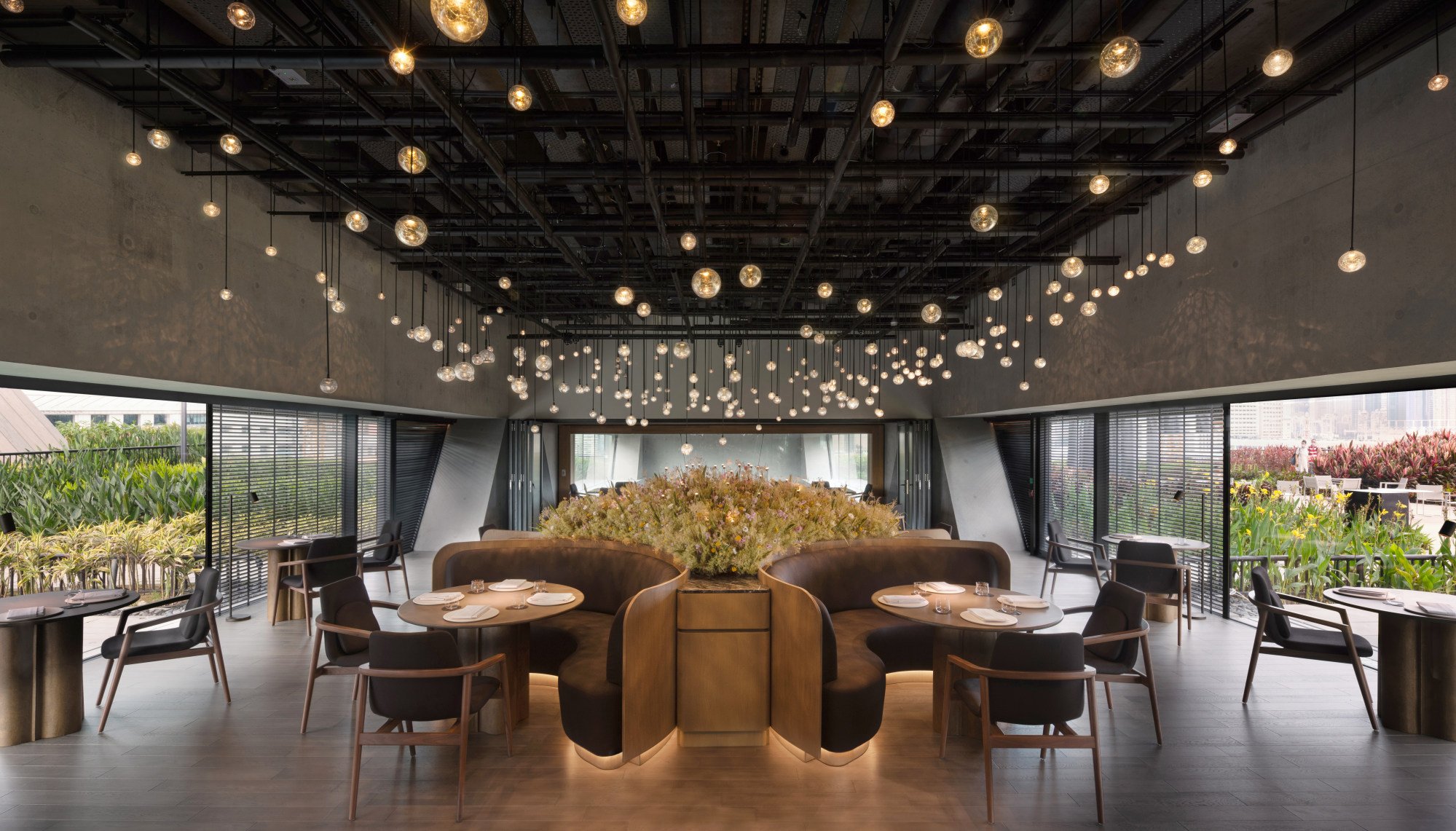
What is good restaurant design? Experts in Hong Kong reveal how they approach projects and the effect it can have on a venture’s success – or failure
- To be competitive in Hong Kong’s ever-changing culinary arena, designers are innovating with different approaches
- We look at the thinking behind fine-dining restaurants such as Ichu, The Magistracy and Mosu, as well as budget chain Love Rice Noodles and burger joint Honbo
Running a restaurant can be risky business, even in the best of times. And it’s fair to say that recent times have been among the worst.
Even so, with new venues continuing to open regularly in Hong Kong, we wondered: what does design have to do with their success, or failure?
To be competitive in the city’s ever-changing culinary arena, designers are holding up their end of the deal by innovating with different approaches.
According to Joyce Wang, the founder of Hong Kong- and London-based Joyce Wang Studio, design plays an important role in a venue’s success or failure.
Art deco-style home in Hong Kong that’s anything but gaudy and over the top
“I always say a restaurant can be well designed but if it’s not run and operated correctly, it can be a total failure,” she says.
“But if you don’t account for [design], you might not get repeat customers. If the seats aren’t comfortable for a long stay, or [the space is] so dimly lit guests can’t see their food, or they’re sat very close to the kitchen and the door keeps opening on them, they’re not going to want to come back.”

Wang’s design approach considers the operational brief first: the kind of food served, number of covers expected and average spend per person. “Then we start designing,” she says.
Sometimes it’s the chef’s approach that informs the design language. Wang explains that for Ichu in Central – helmed by Virgilio Martinez, a Latin-American chef known for foraging wild ingredients from across his native Peru – richly textured materials and raw finishes evoke the diverse topography and dynamic ecosystem of the Peruvian landscape.
Meanwhile, Martinez’s progressive culinary style is captured in the restaurant’s vibrant colours and inventive flourishes, such as fluorescent glass tubes lined with neon-dyed linen inspired by American artist Dan Flavin, and a banquette made from excavated fossil stone.

Other times inspiration comes from the space itself: at Central fine-dining French restaurant Belon, the very low ceiling informed the installation of reflective panels overhead.
The building was definitely a factor in Wang’s design of The Magistracy, Hong Kong’s historic Supreme Court in Central now transformed into a culinary and social destination (opened by Black Sheep Restaurants in October 2022).
Whereas restaurant fit-outs in Hong Kong typically adhere to a tight time line of only a few months, it took two years to refurbish The Magistracy, a declared monument built in 1912. “Everything had to meet the stringent rules of the Antiquities and Monuments Office,” Wang says.

At The Magistracy, long-ago events brought the design story to life.
“We imagined this as the dining room of highbrow society – the lawyers and judges – so it has this air of formality about it,” Wang says.
“Because the idea of an institutional dining room feels super-timeless, as if it was always there, we used materials with a stately presence: burred woods, marble, leather in a burgundy tone and brass table lamps.”
In the main dining room, on three arched doorways leading to the gin garden, are moulding details Wang perceived as “almost looking like the judge’s wig arranged in a crown shape”.
“We created wood carvings inspired by the institutional and decorative quality of that existing moulding and hung them on the mezzanine,” she says.

Opposite these arches is a triptych artwork from American figurative artist RF Alvarez, its abstracted figures in landscape alluding to people’s imagination of life in Hong Kong’s tropical landscape, Wang says.
“We live in this tropical jungle but a lot of people forget that, because there is so much concrete around,” she says.
Wang also commissioned a tapestry from French weaving workshop Pinton showing a view of Mid-Levels looking from Queens Road East in 1910, a time when the Magistracy was at its height, a bustling space frequented by different levels of society.
How an American revolutionised China’s rug-making game in the 1920s and ’30s
Felt-topped tables, drapery and rugs underneath the central banquettes bring softness and sound absorbency to the lofty space. Lots of plants, indoors and out, add to the ambience.
For architect Sean Dix, founder of Hong Kong- and Milan-based Dix Design + Architecture, the secret to his approach stems from his early hospitality experience, beginning as a teenage kitchen hand in Chicago, in the US.
“This makes [a designer] better understand how places need to operate, and think more carefully about the flow of the space from a point of view of a team and the guest experience,” Dix says. Before a designer starts considering the superficial aesthetics, the spatial flow “needs to work”, he adds.

Next comes the romance.
“My designs, though aesthetically always quite diverse, share a common approach: I want to transport guests from the prosaic outside world [and] make them feel like characters in a film. My restaurant designs are those film sets,” Dix says.
In the case of Hong Kong burger brand Honbo, Dix’s design for founder Michael Chan’s latest venue in Sha Tin’s New Town Plaza Phase 3 is inspired by the modernist institutional architecture that was prevalent across midwestern America in the early 1960s.
She so loves Hong Kong’s secret abandoned houses, she held a dinner in one
“The custom booths were inspired by archetypal American roadside diners and the first McDonald’s dine-in restaurants. The bespoke shell chairs and tables are direct descendants of the ubiquitous fibreglass shell chairs found in elementary-school cafeterias,” Dix says.
“Every detail was designed to reinforce this cinematographic concept, as if you are sitting in a film set in a 1962 small-town Kansas burger joint.”
For Mora, a French-Chinese restaurant in Sheung Wan that opened in January 2022, Dix looked to tofu, one of the signature ingredients of owner Vicky Lau, who is also founder and executive chef of the two-Michelin-star Tate Dining Room, and Date by Tate.

Instead of using stucco to conceal the natural porosity of the travertine bar, as is typically the case with this material, Dix filled the holes with a translucent resin to evoke the texture of tofu.
The sinuous form of bespoke, 3D-printed pendant lamps “are a reference to the bunched and rolled texture of tofu skin”, he added, while “quietly in the background”, the chairs, sofa booths, wooden-framed archways and antiqued backlit mirrors are a nod to Lau’s Chinese heritage.
“All of those elements have some aesthetic reference to traditional Chinese woodworking, architecture and design, and also reference Shanghai art deco – the 1930s intersection of Chinese and French design,” Dix adds.

Multidisciplinary studio LAAB Architects approaches its restaurant projects in the way good chefs prepare their dishes.
“We care about the craftsmanship, and at the same time we care about innovation,” explains Otto Ng, LAAB co-founder and design director. “In blending compatible material ingredients together, our design story is very much the culinary story of a chef.”

LAAB’s design for Mosu Hong Kong – the offshoot of Korea’s three-Michelin-starred Mosu Seoul at Hong Kong’s M+ museum, opened by Lai Sun Dining – brings the surrounding landscape into the interior in a meeting of technology and nature.
A focal point is a floral art installation of preserved flowers and foliage by local artisans at Flowerbed.
“[Mosu] executive chef Sung Ahn curates his plates with subtle nuances of seasonal produce,” Ng says. “Likewise, the colour of the flowers will quietly fade as the season transforms from spring to winter.”

A chandelier above the installation is individually programmed so that its bulbs sparkle and dance like fireflies in the evening light.
LAAB’s team also explored ways of expressing the same material in subtle yet surprising ways, Ng says. For example, walnut is used in the bespoke curved armchairs, and in pleated, sculpted and slatted wall treatments.
Glass lamp shades appear in different shapes and textures to deliver different lighting effects, while a mix of polished, flamed and honed granite is used for the bar and reception counters.
The subtle diversity in materials “offers a discovery journey of details, akin to the culinary experiences which are also revealed in different layers”, Ng says.
Windows provide a visual connection to the Focus Gallery at M+, a reminder that you are part of the museum, he adds.
Like set designers that create cinema magic out of duct tape, cardboard and spray paint, we look for the best ways to achieve memorable effects economically and quickly
A restaurant does not always have to heavily invest in design to be successful, though.
“Hole-in-the-wall spaces that are not highly designed can do very well, and some of these are my favourite places to go in Hong Kong,” Wang says, pointing to local eateries on Anton and Landale streets in Wan Chai that have basic interiors but great food.
While Dix’s portfolio does contain a lot of high-spec design, he insists that many were done on “a shoestring” – for example, fast-casual chain Love Rice Noodles.
To serve a “very cost-sensitive” client with five locations in Hong Kong, Dix created a system that allowed almost everything to be produced off-site, thus reducing construction time, using local labour to improve the finish quality.
“Like set designers that create cinema magic out of duct tape, cardboard and spray paint, we look for the best ways to achieve memorable effects economically and quickly,” he says.

